This post will show you an easy way to make a successful sourdough loaf from the ancient grain, emmer. You don’t need experience with ancient grains – this method is simple, requiring no kneading. You will be rewarded with a loaf that is made with, arguably, the most flavourful of all the ancient grains – incredibly sweet, nutty and tangy with crunchy seeds adding texture throughout.

I am used to baking with ancient grains. I have cupboards full of non-wheat cereals: spelt, rye, buckwheat, millet, einkorn…I bake with them all every week. But, up until recently, I’d always been a bit daunted by baking with emmer. I’d heard that it was difficult to handle, that it made a dough that felt like wet sand and that it wouldn’t rise.
And so, when I was gifted a big bag of emmer by regenerative, organic farm Grand Teton Ancient Grains, I knew it was time to take on the challenge of creating a good sourdough emmer loaf.
At first, I tried the same techniques I use for spelt. I’m good with spelt (I’ve written a book on it). But my spelt recipes didn’t work with emmer. I could make a passable loaf using the same techniques I use with spelt, but the dough was so sticky and the rise I was able to obtain was not great.
I knew I had to try a different approach. After failed attempts with autolysing the flour (that is mixing flour and water and leaving it overnight to ‘settle’) and failed attempts at intensive kneading, I decided to turn to the techniques that I use to make sourdough rye bread.
Using these techniques, designed for the low-gluten rye grain, was a revelation with emmer. The loaves bloomed – the mixing was a dream and they rose well in the oven.
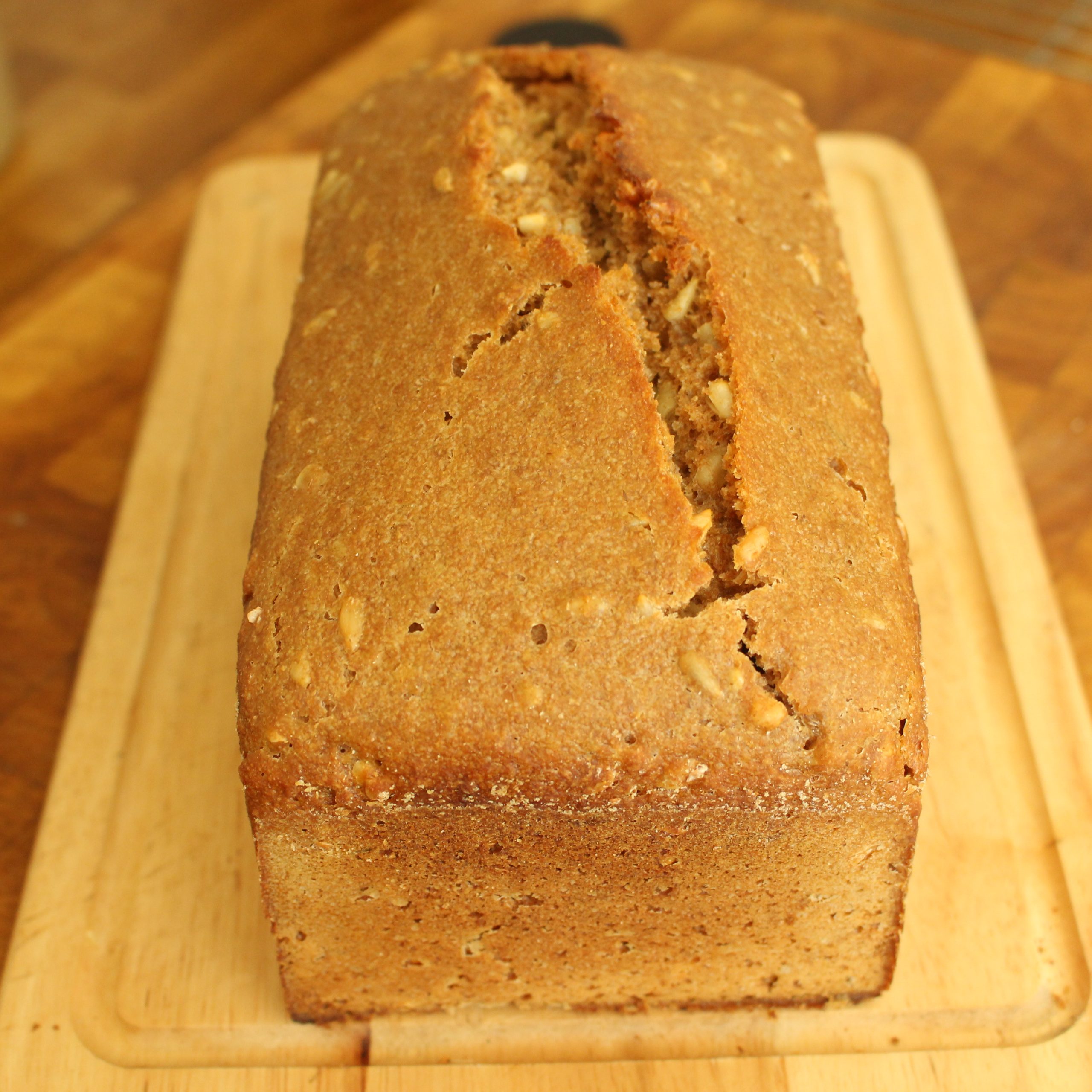
Tasting this sourdough loaf made with emmer was a revelation. The flavour is like nothing else; it is incredibly sweet and also fragrant and nutty. It leaves your mouth happy in a way that I’ve not experienced with other ancient grains.
As you might guess, this loaf is now regular part of my ancient grains sourdough baking!
If, in the past, you’ve tried and failed to make a sourdough loaf with emmer or you’ve read that it’s a difficult grain to handle in breadmaking, this recipe will dispel all your fears. It’s simple, it’s foolproof and it makes the most amazingly flavoured ancient grain sourdough.
First of all, let’s dive a little bit into emmer:
What is emmer?
Emmer is an ancient grain, that is, a cereal grain that has been used for thousands of years and comes to us, in the modern era, virtually unchanged genetically.
It is much lower in gluten than wheat, and, as an ancient grain, many people who have problems with wheat find they are able to digest emmer – especially when it’s made into sourdough – without problems.
For answers to more questions about emmer, including its similarities to and differences from other ancient grains, see my FAQ section below.
Is emmer good for sourdough?
Yes, emmer makes the most amazingly-flavoured sourdough. It is not, however, easily to get good results from emmer if you apply the same bread-making techniques that would be applied to wheat. A different process is needed. To get good results from emmer, I found it best to employ the same techniques I use when making rye bread – that is no kneading, a pre-ferment and a very high-hydration dough. When treated this way emmer makes a glorious sourdough bread with flavour that is unbeatable. My recipe will show you how!
The practical stuff:
This bread needs to be started the night before you wish to bake it. At that time, you create a pre-ferment along with soaking the sunflower seeds. Both of these are left on the counter overnight before mixing the main dough in the morning and baking it around lunchtime.
You will need a loaf pan and ideally it will have a lid. This bread comes out best for me in my 1kg/2lb Emile Henry ceramic loaf pan. If you don’t have a lid you can improvise one by tenting your pan with aluminium foil.
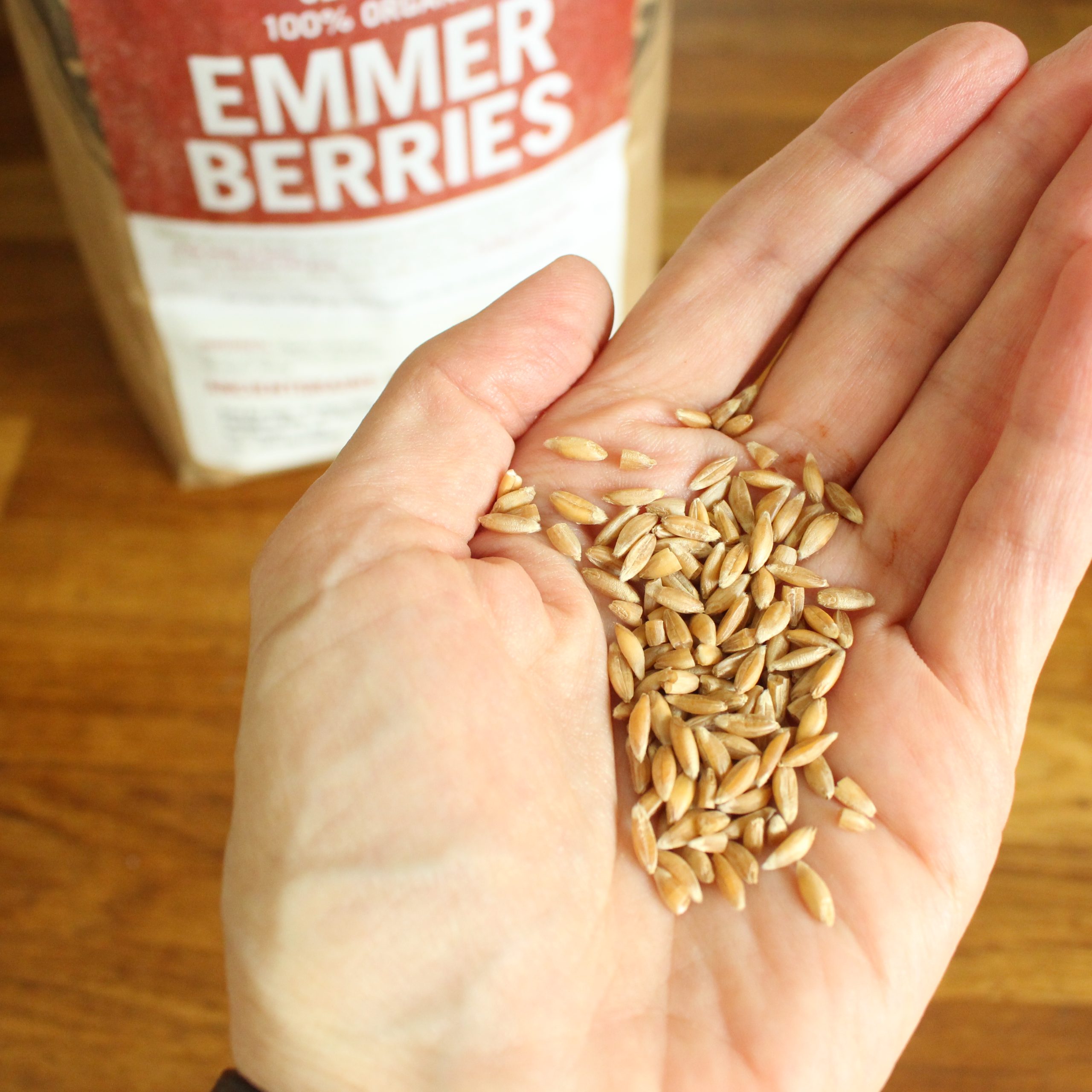
I make this loaf using emmer berries from ancientgrains.com, ground at home in my Mockmill. If you are in the UK you can source whole emmer grains from Hodmedods. If you don’t have a mill at home, using pre-ground emmer flour for work fine
Although this bread is 100% wholegrain emmer flour, it will work with sourdough starter made of any flour. I would not be without my rye sourdough starter (find advice on how to create one of these here).
Seeded Wholegrain Emmer Sourdough
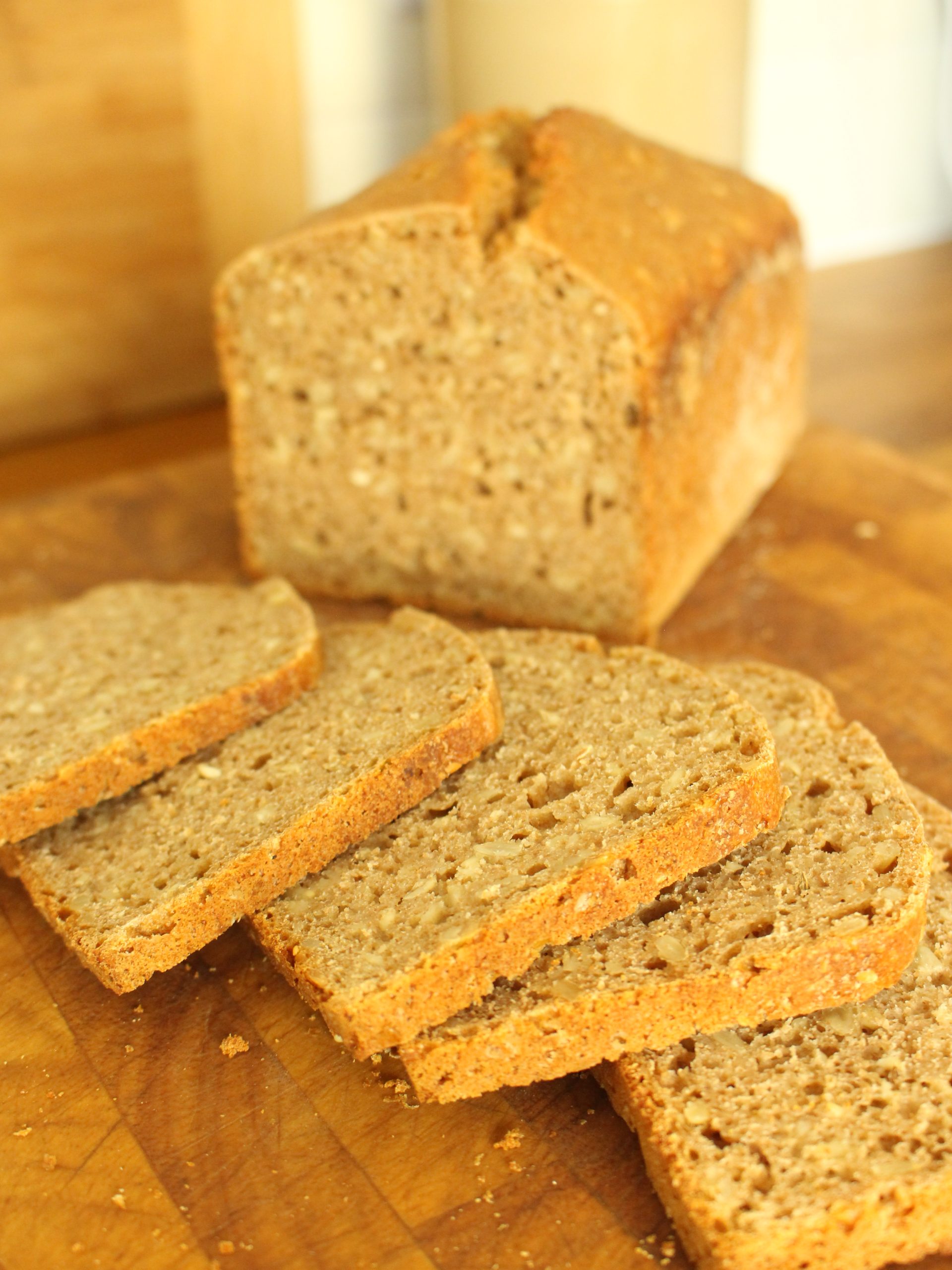
Ingredients:
For the pre-ferment:
230g wholegrain emmer flour
230g water
45g sourdough starter (can be any grain)
For the main dough:
320g wholegrain emmer flour
9g salt
120g water
100g pre-soaked sunflower seeds
Method:
The night before you want to bake:
The sunflower seeds need to be soaked:
- Put them into a bowl and cover them with ample water, before leaving them on the counter overnight.
Make the pre-ferment:
- Combine the water and sourdough starter, mixing well. Stir this mixture into the flour.
- Clean the sides of the bowl and flatten the top of the mixture with wet spatula.
- Cover the bowl tightly with a plate or some clingfilm/plastic wrap.
- Leave this mix overnight in a warm place – when I created this loaf the daytime temperature of my house was 24C/68F; try to find a space that’s somewhere between 20C/68F and 24C/75F.
The morning of the bake:
- Retrieve the mixture that’s been pre-fermenting overnight. It should be visibly expanded and smell fermented The bowl should sound hollow when you knock the side of it and you may also see tiny pin holes on the top of the surface. If you’re unsure whether the mix is ready, you can dig a spoon into it – you should find honeycomb-style network of holes. If you are in any doubt that the mixture is ready, return it to your warm place and check it again in an hour or two.
- When you are ready to proceed, drain and rinse the sunflower seeds, before pouring them into the bowl that contains the pre-ferment.
- Add the water to this and stir until well combined.
- Stir the salt into the flour.
- Add the flour/salt to the liquidy pre-ferment, stirring until there is no loose flour and the mixture is well combined.
- Using a wet spatula, clean down the sides of the bowl before pressing down and smoothing the top of the dough.
- Cover the bowl tightly with a plate or clingfilm/plastic wrap.
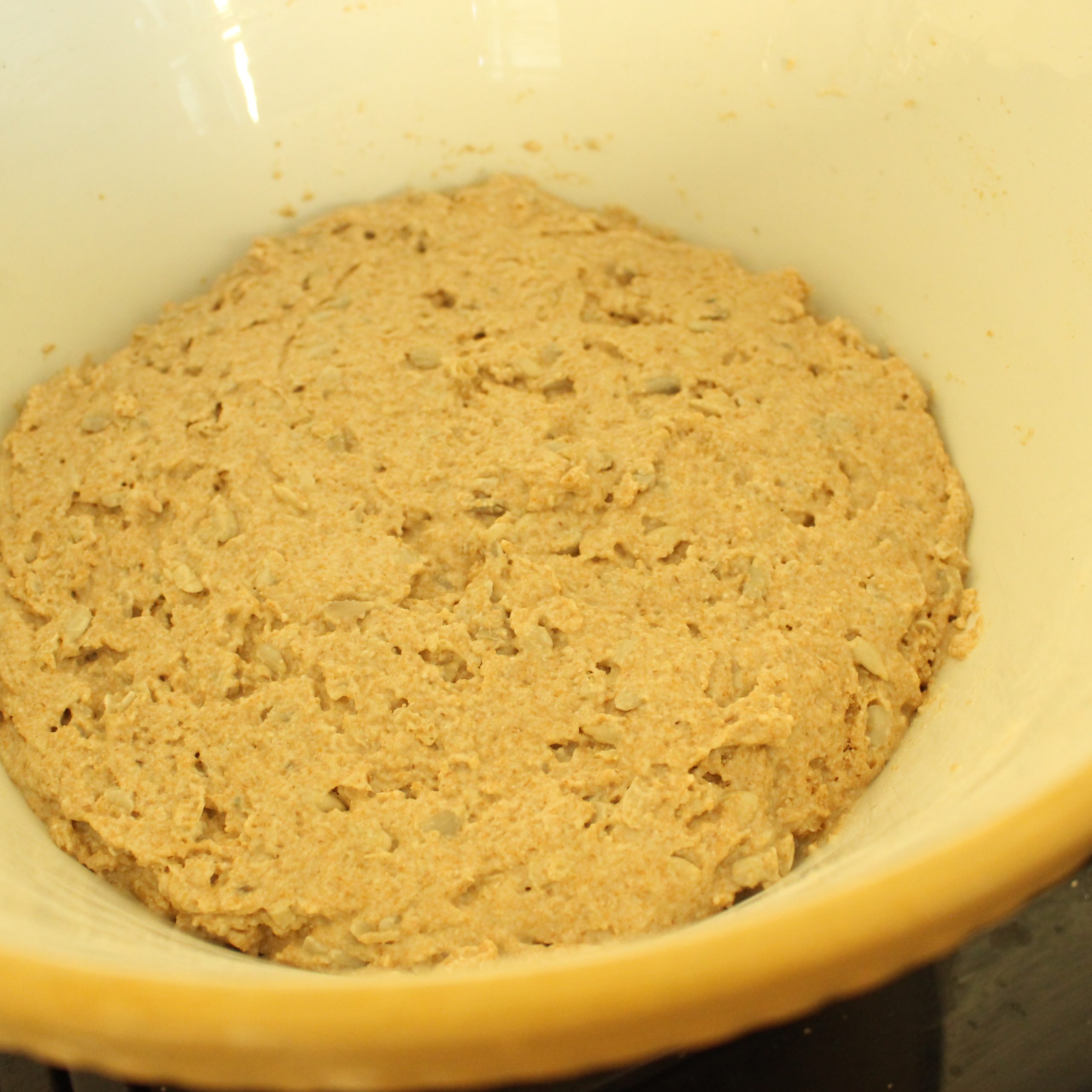
- Leave in a warm place to ferment. In my kitchen, at 24C/75F, I leave this two hours.
- Prepare a loaf pan for the bread, greasing and flowering the inside.
- When the dough is ready (it will be bigger, smell active, and be airy) it’s time to get it into the pan. I find the best way to do this is to use a wet spatula and scoop portions of the dough out at a time, dropping them into my pan. Once I have all the dough, I wet my spatula again and shape/smooth the top of the loaf.
- Cover the loaf pan. If your pan doesn’t have a lid you can tent the pan with aluminium foil.
- Leave in a warm place to ferment. In my kitchen, 24C/75F, I leave this for an hour and a half.

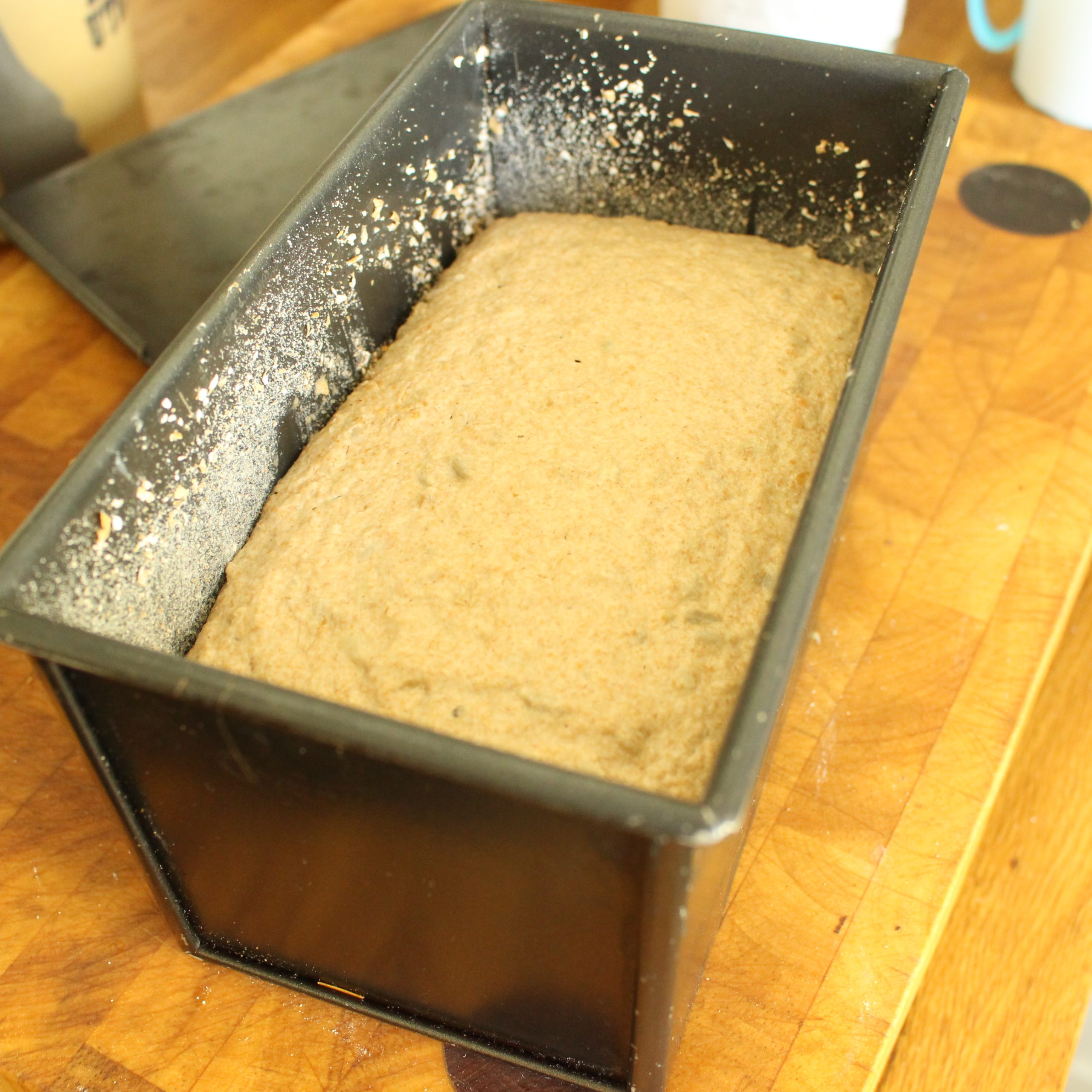
- About 20 minutes before you judge the bread to be ready, preheat your oven to 210C/410C.
- When the loaf is ready (it will be bigger and may have tiny pin holes on the surface), ensure the lid is well fitting and place inside your preheated oven.
- Cook the bread at 210C/410F for 25 minutes and then reduce the temperature to 190C/375F. My loaf (cooked in a Emile Henry ceramic baker) takes a further 30 minutes at this temperature.
- The bread will be done when it registers 95C/200F at its centre with a probe thermometer. If you don’t have one of these, you can judge doneness based on the colour of the crust and the loaf sounding hollow when you tap it on the bottom.
- Remove the bread from its pan to a cooling rack and leave it to cool completely before cutting.

This seeded wholegrain emmer sourdough will keep at least four or five days in a bread bag or tin. If you are used to spelt loaves going stale after two or three days, you will be pleasantly surprised at the keeping qualities of emmer.
FAQs
What’s the difference between emmer and spelt?
Both emmer and spelt are ancient grains. They both have wheat-like qualities (as does their sister ancient grain, einkorn). Their similarities are shown by what the Italians call them. In Italian, einkorn, emmer and spelt are all part of the ‘farro’ family; einkorn is ‘farro monococco’, emmer is ‘farro dicocco’ and spelt is ‘farro spelta’. Emmer is genetically more complex than einkorn but simpler than simpler than spelt.
From the bakers point of view, emmer handles very differently to spelt. It stretches much more, but with its lower gluten content it is harder to use the methods of conventional wheat bread-making. This is why my recipe uses the techniques I would normally apply to very low-gluten doughs, such as those made with rye.
Does emmer contain gluten?
Yes, emmer does contain gluten. Therefore if you are coeliac you shouldn’t eat it. If, however, you have non-specific gluten intolerance you may find, as others do, that eating sourdough made with ancient grains such as emmer does not cause you problems.
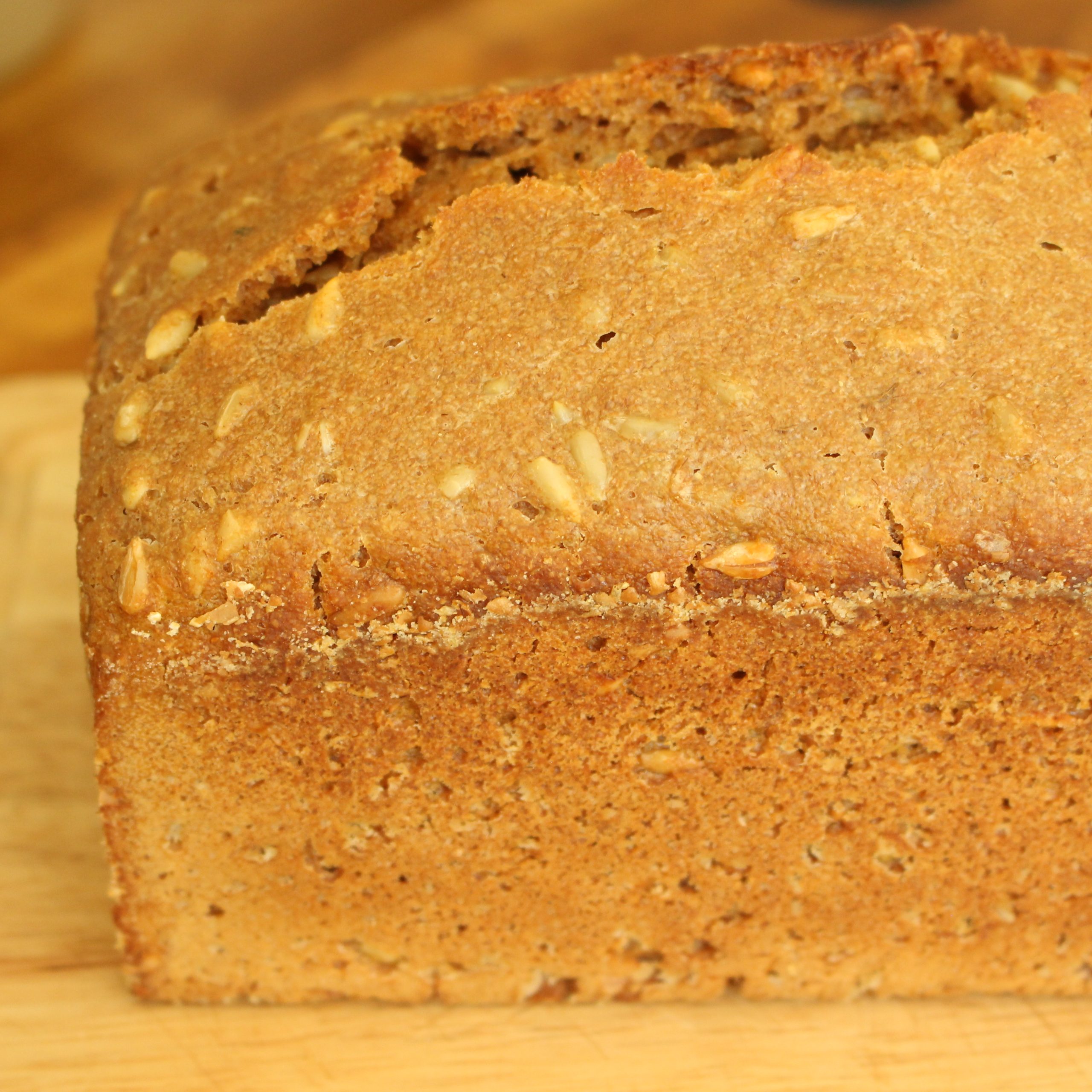
What’s the difference between wheat and emmer?
Emmer is an ancient grain, a cereal that our ancestors have been using for thousands of years. Modern wheat that we buy in shops today is a product of an intensive selective breeding programme in the 1960s. This was designed to increase wheat yield, with no concern for flavour or health benefits. When you choose to bake with emmer you are choosing a grain that has sustained ancestors for many years and has not been messed with as has modern wheat.
You might also like:
5 Reasons to Bake With Ancient Grains
All About Spelt Sourdough (podcast episode)
How to Make Sourdough Rye Bread From Scratch
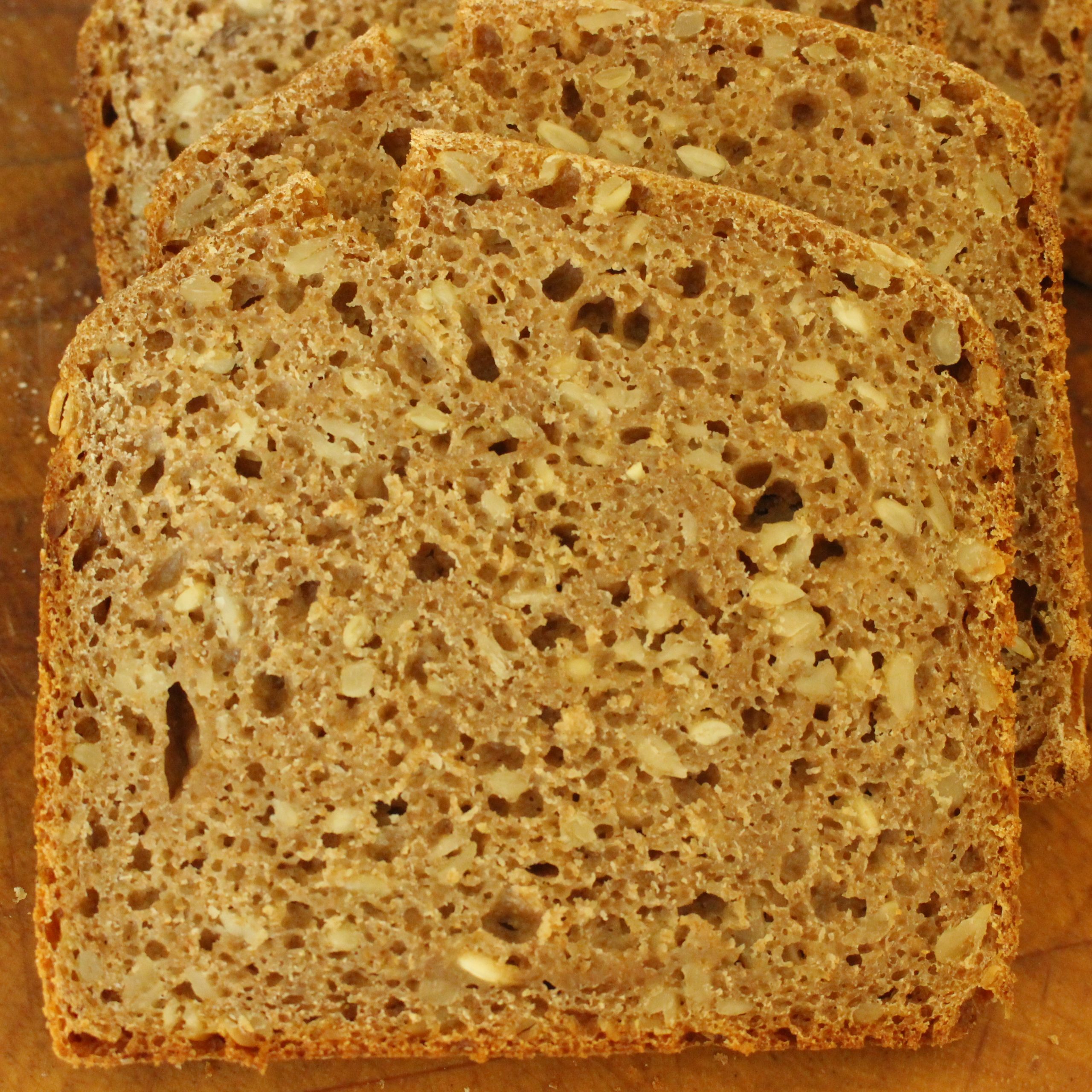
Thank you so much to Grand Teton Ancient Grains for sponsoring this post, allowing me to develop, test and write up this recipe.
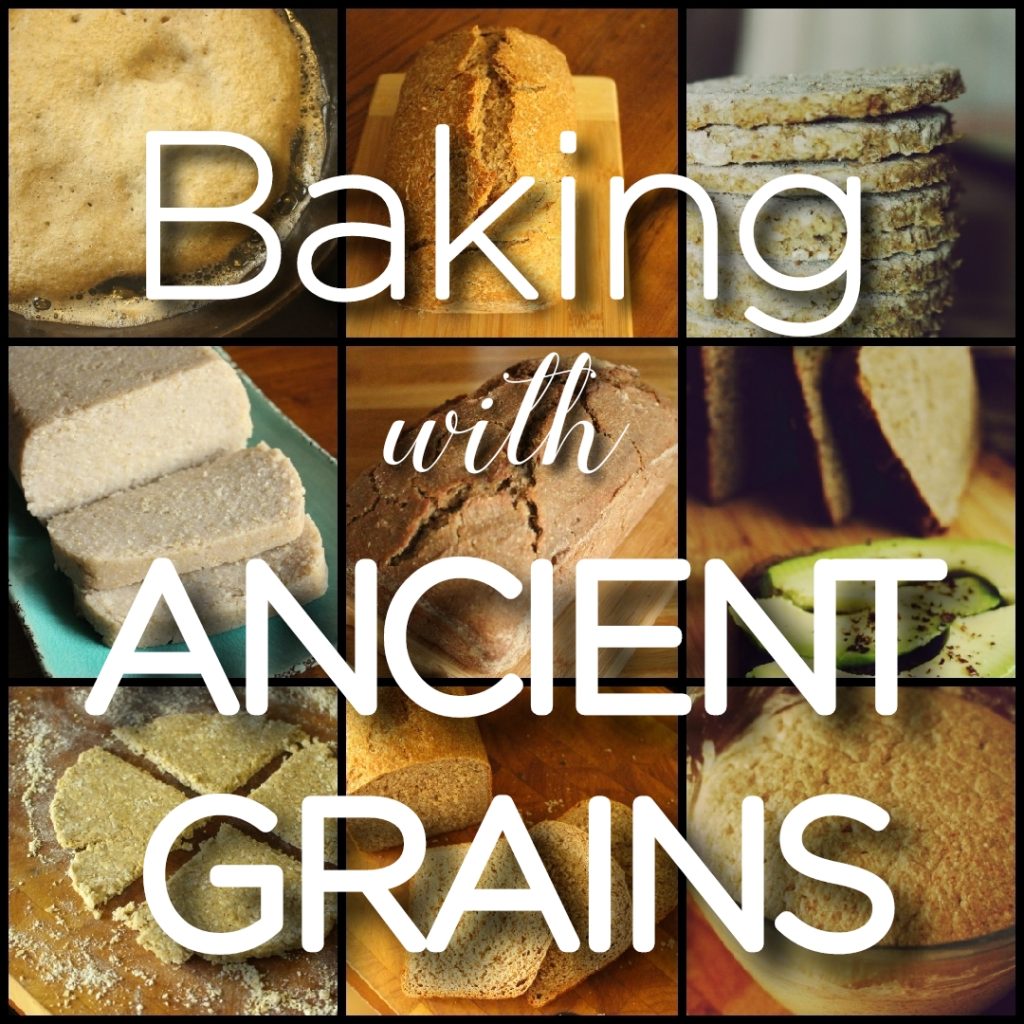
Bring ancient grain baking into your kitchen!
Download my free 30-page guide with five healthy and tasty 100% ancient grains recipes.

